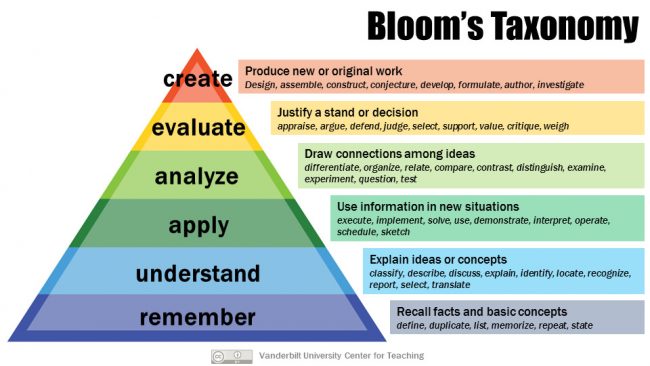In this lesson, we'll cover the steps to design and facilitate a long-form media project. We'll start by discussing media project design principles and then discuss key benchmarks you can use to plan and facilitate your project. This content can be applied to design your own media projects or to implement projects from the WeVideo Assignment Ideas Library. You may use any of these resources to facilitate the media project or activity you implement for this course.

WeVideo Certified Educator Course
Long-form media project design
Authentic assessments evaluate whether a student can successfully transfer knowledge and skills gained in the classroom to various contexts, scenarios, and situations. Media projects are a form of authentic assessment that promote higher-order thinking skills as students engage in a creative process of producing new or original work. As you begin to craft your media project, consider how to design an authentic assessment that invites students to develop higher-order thinking skills.

Media projects provide the perfect opportunity for students to create work for a broad authentic audience and even make an impact on the world! This tends to lead to higher levels of motivation and engagement from students. As you design your media project, consider how students will share their media with an authentic audience.

PBL Works' Elements of Gold Standard Project-Based Learning is a great framework for media project design. We encourage you to consider how you will weave each of these elements into media projects you design and facilitate.
For example, the Digital Citizenship Videos project in the assignment library could be framed around the following challenging problem or question: How can we influence our school community to practice positive digital citizenship? The public product for this project could be for students to create informational or persuasive videos that are used to launch a school-wide digital citizenship campaign.

Longform media project flow
1. Analyze
![]()
A good place to start with any media project is to have students analyze examples, or models of excellence. For example, you could use a see, think, wonder routine for students to identify features of high-quality work. These features can then be turned into a formative rubric that can be used to facilitate self-reflection and peer feedback. This activity engages students in a process of critical thinking as they co-construct a rubric, leading to a greater sense of agency over the learning process.

2. Research
![]()
If students are choosing their topic, provide a scaffold to help them focus in on something relevant and realistic. Once they have their topic, it's time to conduct research and write a script.
.jpg)
3. Storyboard
![]()
Once students have their story, it's time to plan the visual elements of their film. Have students turn their script into a storyboard, so they can plan for the media they need to capture.
.png)
4. Record
![]()
If students are going to capture their own footage in order to create a film featuring original media, share this video to help them learn how to record quality video footage.

5. Edit
![]()
There are several resources available to help students learn how to edit with WeVideo. Students can get started by watching this simple tutorial video, dive deeper by watching any number of the tutorial videos on WeVideo Academy, or complete the two WeVideo Certified Student Courses for a more structured approach.

6. Iterate
![]()
Once students have an early draft of their video, it's a good idea to run a peer feedback routine. Just be sure to give students a framework and teach them how to provide useful feedback. We like the TAG feedback model with the guidelines to be kind, specific, and helpful. You might also run a peer feedback routine after students create a storyboard.

7. Distribute
![]()
Once students finish their film, it's time to distribute! You'll want to have planned for how student films will be shared and with what audience. Will students build a website, host a film screening in the auditorium, host a film fest at a local theater, build a museum exhibit in the library? Whatever you decide, how will they advertise the event? Will they make posters, announcements, sell tickets, etc.?

8. Assess
![]()
You'll want to be clear about your assessment criteria. Providing students a rubric ahead of time is a great way to do this. To help them get familiar with the assessment criteria, you might consider having students use the rubric to grade one of the exemplars shared at the beginning of the project, as a means of providing peer feedback, or to self-assess an early draft of their own work.

9. Reflect
![]()
Finally, once the project has come to an end, you'll want to have students engage in self-reflection to support learning, metacognition, and a growth mindset. You might consider using the reflect and connect activity to have students self-reflect with a webcam recording, and then assembling the various artifacts from the project into a digital portfolio!
